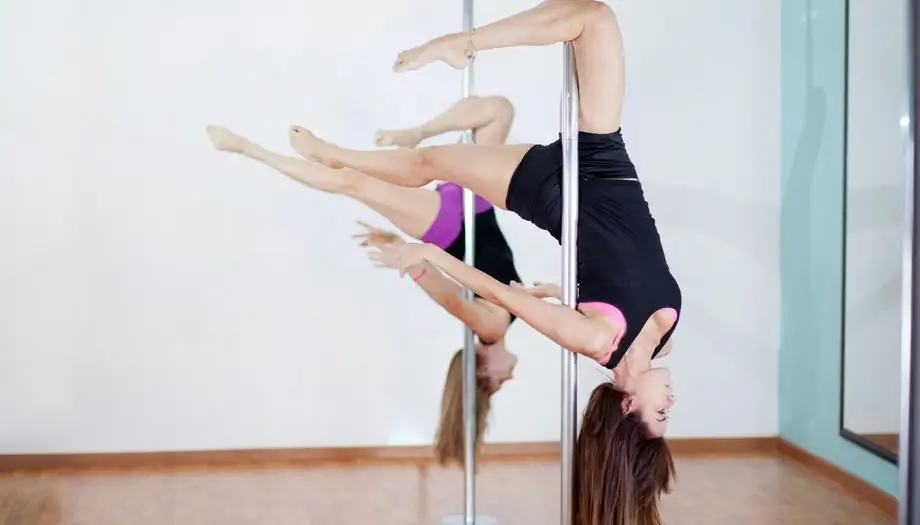- Author Rachel Wainwright [email protected].
- Public 2023-12-15 07:39.
- Last modified 2025-11-02 20:14.
Dance aerobics
Dance aerobics is one of the areas of fitness, which is a set of exercises performed with musical accompaniment. It is otherwise called "low-impact aerobics", since these physical activities do not involve performing exercises while lying on a mat or using special equipment and devices.

Dance aerobics attracts many people with its accessibility, creative focus and emotionality.
The difference between dance aerobics and dance itself is that during training, the movements are almost continuous - while in dance lessons you have to pause to learn new movements. Dance aerobics "kills two birds with one stone": it burns calories, contributing to the overall health of the body, and teaches the athlete the art of dancing - if not on a professional, but at a quite decent level.
Dance aerobics lessons allow you to keep the human body in excellent physical shape, stimulate muscle flexibility, and promote fat burning. In addition, dance aerobics, in contrast to gymnastic and athletic, is an excellent antidepressant that allows you to develop in a person not only flexibility, plasticity and grace, but also a "creative streak", changing the content of the course depending on your preferences, physical capabilities and interests …
Dance aerobics for weight loss and health improvement
Regular dance aerobics lessons not only allow you to build the correct body proportions, but also make your body healthier and more enduring.
The term "aerobic" literally means "using oxygen" or "living on air". Research from world health institutions (including Reebok University specialists) has confirmed the positive effect of dance aerobics on the work of the respiratory and cardiovascular systems. Aerobic exercise makes the heart, blood vessels and lungs "work" in a certain mode, to adapt to increasing loads. As a result, a powerful immunity is created, the body is filled with capacity for work and energy, a person forgets what "chronic fatigue" is.
Below are some of the positive effects of regular dance aerobics:
- An increase in blood volume in an amount that allows increasing the ability to transport oxygen to the tissues of the body;
- Strengthening the heart muscle, improved blood supply;
- Strengthening the skeletal system, musculoskeletal system;
- Increased efficiency;
- Increased lung volume;
- Reducing blood cholesterol levels;
- Increased stress resistance.
Dance aerobics is perfect for weight loss: exercise promotes faster calorie burning, strengthens muscles and shapes the figure. In order for aerobics classes to lead to the long-awaited result, namely, a slim and flexible body without excess weight, you must adhere to several rules:
- Classes should be regular (at least 2-3 times a week);
- It is necessary to start exercise no earlier than 1.5 hours after eating;
- After dancing aerobics lessons, you should not immediately have lunch or lie down on the couch: for several hours after exercise, there is intense fat burning;
- Despite the presence of physical activity, it is recommended to follow the principles of a balanced diet, avoiding excesses.
Dance aerobics at home
In order to feel the effect of exercise, you do not need to use the services of a specialist or visit a sports center - you can do dance aerobics at home. Let's learn several principles, without which no dance aerobics lesson can do:
- Warm up. In order for the body to adequately take the load, it must be prepared by performing exercises for the arms, shoulder girdle, trunk, legs and neck. Of course, to any rhythmic music;
- Aerobic phase. It is the basis for achieving the health benefits of exercise. It is characterized by moderate exertion, which increases the rate of respiration and heart rate, but does not disturb the balance between inhalation and exhalation. The optimal heart rate in the aerobic phase is 140-160 beats per minute. You can check the intensity of aerobic exercise using the "talk test": if during the lesson you can maintain a conversation, then the load is acceptable;
- Power phase. Strength exercises should be no more than 10 minutes from a dance aerobics class. They include squats, push-ups, jumps and some other types of loads. During the strength phase, bones and joints are strengthened, as well as the rapid burning of excess calories;
- Preparation for the completion of classes. It is not recommended to stop exercising suddenly: it is dangerous with a sharp drop in blood pressure. After completing classes, you cannot stop or sit down: for some time you need to walk around the hall, stretch your muscles, measure your pulse and wait until your heart rate returns to normal.

Types of dance aerobics
Dance aerobics, as mentioned above, is carried out at a fast pace to one or another music. Depending on the style of the musical direction, the following types of dance aerobics are distinguished:
- Latin aerobics. One of the most popular directions in dance aerobics, the main difference of which is a springy step and continuous work of the hips;
- Funk aerobics. It involves the performance of wave-like movements by the body and free hand plastics. Recommended for people with choreographic training;
- Hip-hop aerobics. One of the most difficult types of dance aerobics. In one lesson, about 450 kcal is burned;
- Rock and roll aerobics. The basis of this direction of aerobics is "rock and roll" step, jumps, turns, running, moving;
- Belly dance (belly dance). Allows you to forget about problems in the waist, abdomen and hips, make the girl more flexible and flexible;
- Strip dance. In addition to the fight against extra pounds, this direction in dance aerobics allows women to feel free, feel more confident and sexy.
Contraindications
Dance aerobics classes are not recommended for people suffering from asthma, problems with the cardiovascular system and the spine, as well as patients who have had myocardial infarction or traumatic brain injury.
Found a mistake in the text? Select it and press Ctrl + Enter.






